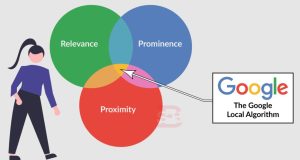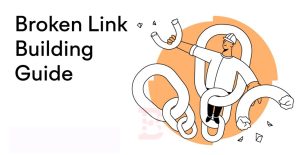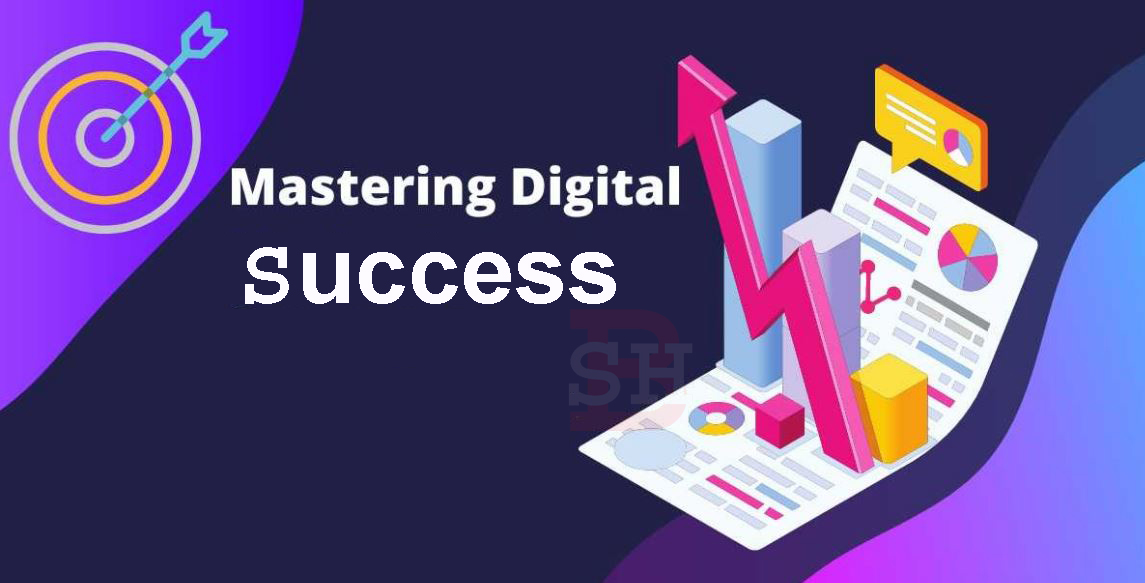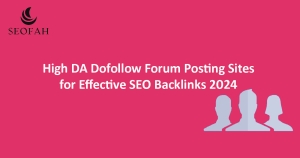 Mastering Digital Success – Link building is a crucial aspect of search engine optimization (SEO) aimed at improving a website’s visibility and authority in search engine results. Here are some fundamental principles:
Mastering Digital Success – Link building is a crucial aspect of search engine optimization (SEO) aimed at improving a website’s visibility and authority in search engine results. Here are some fundamental principles:
Quality Content Creation:

- The cornerstone of effective link building is creating high-quality, valuable content that others naturally want to link to. Content can be in various forms like blog posts, articles, infographics, videos, etc. Here are some key principles to keep in mind when creating content:
- Understand Your Audience: Before creating content, research and understand your target audience’s interests, preferences, pain points, and needs. Tailor your content to resonate with your audience and provide value to them.
- Provide Value: Your content should offer valuable information, insights, solutions, or entertainment to your audience. Aim to educate, entertain, inspire, or solve problems through your content.
- Originality and Uniqueness: Strive to create original and unique content that stands out from the competition. Avoid duplicating content from other sources, and provide your own perspective, research, or experiences.
- High-Quality Writing: Ensure that your content is well-written, grammatically correct, and free of spelling errors. Use clear language, engaging storytelling, and proper formatting to enhance readability.
- Visual Appeal: Incorporate visually appealing elements such as images, videos, infographics, and charts to enhance the presentation and engagement of your content. Visuals can help convey information more effectively and capture the audience’s attention.
- Search Engine Optimization (SEO): Optimize your content for search engines by incorporating relevant keywords, meta tags, headings, and internal/external links. However, prioritize creating content for humans first, and ensure that it provides value regardless of SEO considerations.
- Regular Updates: Keep your content fresh and up-to-date by regularly updating and repurposing existing content. This helps maintain its relevance and ensures that it continues to provide value over time.
- Multimedia Content: Experiment with different types of content formats such as articles, blog posts, videos, podcasts, webinars, and interactive quizzes. Diversifying your content formats can cater to different audience preferences and increase engagement.
- Engage Your Audience: Encourage audience engagement by inviting comments, questions, and feedback on your content. Respond promptly to comments and interact with your audience to build relationships and foster a sense of community.
- Measure and Analyze Performance: Track the performance of your content using metrics such as website traffic, engagement metrics (e.g., likes, shares, comments), conversion rates, and search engine rankings. Use this data to identify what content resonates with your audience and optimize your future content strategies accordingly.
By focusing on quality content creation that addresses the needs and interests of your target audience, you can effectively build brand authority, establish thought leadership, and drive organic traffic to your website.
Relevance:

- Aim to acquire links from websites that are relevant to your niche or industry. Relevant links carry more weight in search engine algorithms and are more likely to drive targeted traffic to your site. Here’s how relevance plays a crucial role in various aspects:
- Content Relevance: When creating content for your website or blog, it’s essential to ensure that it is relevant to your target audience’s interests, needs, and search intent. Relevant content not only attracts the right audience but also keeps them engaged and encourages them to explore further.
- Keyword Relevance: Keywords play a significant role in SEO, but simply incorporating popular keywords into your content is not enough. Focus on using keywords that are highly relevant to your content and align with the search intent of your target audience. Keyword relevance helps search engines understand what your content is about and improves its visibility in search results.
- Link Relevance: In link building, the relevance of the linking website to your own site is crucial. Aim to acquire backlinks from websites that are relevant to your industry, niche, or topic. Relevancy indicates to search engines that your website is an authoritative source within its niche, which can positively impact your search engine rankings.
- Audience Relevance: Understanding the demographics, interests, and preferences of your target audience is essential for creating relevant content and marketing campaigns. Tailor your messaging, content, and offers to resonate with your audience and address their specific needs and pain points.
- Contextual Relevance: Consider the context in which your content is being consumed. Ensure that your content is timely, addresses current trends or events, and provides valuable insights or solutions that are relevant to the context in which your audience encounters it.
- Personalization: Personalizing content and marketing messages based on user behavior, demographics, and preferences enhances relevance and improves engagement. Use data-driven insights to deliver personalized experiences that cater to the individual needs of your audience.
- Local Relevance: For businesses targeting local audiences, local relevance is crucial. Ensure that your content, keywords, and SEO strategies are optimized for local search, and leverage local directories, reviews, and geo-targeted advertising to connect with local consumers.
- Consistency: Maintain consistency in messaging, branding, and content across different channels and touchpoints to reinforce relevance and build trust with your audience. Consistent branding and messaging help create a cohesive brand identity and reinforce your relevance in the minds of consumers.
By prioritizing relevance in your content creation, SEO, and marketing efforts, you can better connect with your target audience, improve your visibility in search results, and drive meaningful engagement and conversions.
Natural Link Acquisition:
- Focus on earning links organically rather than resorting to manipulative tactics. Natural links are acquired when other websites find your content valuable enough to link to it without any solicitation. Here are some strategies to encourage natural link acquisition:
- Create High-Quality Content: Develop valuable, informative, and engaging content that naturally attracts links from other websites. Content that offers unique insights, solves problems, or entertains audiences is more likely to be shared and linked to by others.
- Promote Content Through Outreach: Reach out to influencers, bloggers, journalists, and website owners in your industry to introduce them to your content. Personalized outreach can lead to natural link acquisition as others discover and link to your content.
- Participate in Communities and Forums: Engage in relevant online communities, forums, and social media groups where your target audience congregates. Share your content and participate in discussions to establish credibility and attract natural links from community members.
- Guest Blogging: Contribute high-quality guest posts to authoritative websites in your niche. Guest blogging allows you to showcase your expertise, reach new audiences, and earn natural backlinks to your website within the context of valuable content.
- Build Relationships: Focus on building genuine relationships with influencers, industry experts, and other website owners. Building rapport and trust can lead to natural link acquisition as others recognize the value of your content and willingly link to it.
- Create Linkable Assets: Develop linkable assets such as infographics, research reports, case studies, and interactive tools that are inherently shareable and valuable to your target audience. These assets have the potential to attract natural links as others reference and cite them.
- Monitor Brand Mentions: Keep track of mentions of your brand, products, or content across the web using tools like Google Alerts or Mention. Reach out to websites that mention your brand but haven’t linked to your site, and politely request a link where appropriate.
- Provide Testimonials and Reviews: Offer testimonials or reviews for products or services you use and admire. Many businesses include testimonials on their websites and may provide a backlink to your site in return for your endorsement.
- Create Link-Worthy Resources: Develop comprehensive guides, tutorials, glossaries, or resource lists that serve as valuable reference materials for your audience. These resources can attract natural links as others find them useful and shareworthy.
- Earn Editorial Links: Focus on earning editorial links from reputable publications and websites. Editorial links are natural, unsolicited links given by editors, writers, or bloggers based on the merit of your content, expertise, or contributions to the industry.
By focusing on creating high-quality content, building relationships, and providing value to your audience and industry, you can encourage natural link acquisition and strengthen your website’s authority and visibility in search engine results.
Outreach and Relationship Building:
- Reach out to relevant websites, bloggers, influencers, and journalists in your industry to introduce them to your content. Building genuine relationships can lead to natural link acquisition and collaborations. Here’s how you can leverage outreach and relationship building to enhance your online presence and grow your network:
- Identify Target Contacts: Research and identify key influencers, bloggers, journalists, industry experts, and potential collaborators in your niche or industry. Use tools like social media, Google search, and industry directories to find relevant contacts.
- Personalize Your Outreach: Craft personalized outreach messages tailored to each individual or organization you’re reaching out to. Mention specific reasons why you’re reaching out, such as mutual interests, shared connections, or recent content they’ve published.
- Provide Value: Offer something of value to the recipients of your outreach, whether it’s useful information, a collaboration opportunity, or exclusive access to resources or insights. Demonstrating value increases the likelihood of a positive response and fosters goodwill.
- Engage on Social Media: Follow and engage with your target contacts on social media platforms such as Twitter, LinkedIn, and Instagram. Like, comment on, and share their posts, and participate in relevant discussions to build rapport and establish yourself as a valuable member of the community.
- Offer Help and Support: Be proactive in offering help and support to your contacts whenever possible. Provide assistance, share resources, answer questions, and offer insights to demonstrate your expertise and willingness to contribute to their success.
- Attend Industry Events: Attend industry conferences, seminars, workshops, and networking events to meet and connect with influencers and experts in your field. Use these opportunities to initiate in-person conversations, exchange contact information, and build relationships face-to-face.
- Collaborate on Content: Collaborate with influencers, bloggers, or other businesses on content creation projects such as guest blog posts, co-authored articles, interviews, podcasts, or webinars. Collaborative content allows you to leverage each other’s audiences and expertise while strengthening your relationships.
- Follow Up: Follow up with your contacts after the initial outreach to keep the conversation going. Send thank-you notes, share relevant updates or resources, and maintain regular communication to nurture and strengthen your relationships over time.
- Offer Exclusive Opportunities: Provide exclusive opportunities or incentives to your contacts, such as early access to new products or features, discounts, or invitations to special events or webinars. Exclusive offers can help deepen your relationships and foster loyalty among your contacts.
- Be Genuine and Authentic: Above all, be genuine, authentic, and respectful in your interactions with others. Focus on building meaningful, mutually beneficial relationships rather than simply pursuing self-interest. Genuine connections are more likely to lead to long-term partnerships and collaborations.
By investing time and effort into outreach and relationship building, you can expand your network, establish credibility and trust within your industry, and unlock new opportunities for growth and collaboration.
Mastering Digital Success Guest Blogging:
- Contributing high-quality articles to authoritative websites in your industry can help you earn valuable backlinks. Ensure that your guest posts provide real value to the audience of the host website. Here’s how to effectively leverage guest blogging:
- Research Potential Blogs: Identify reputable blogs and websites in your industry or niche that accept guest posts. Look for sites with a relevant audience, high domain authority, and engaged readership.
- Read Submission Guidelines: Before pitching your guest post idea, carefully read and follow the submission guidelines provided by the target blog or website. Pay attention to formatting requirements, word count limitations, and any specific topics or themes they’re interested in.
- Understand the Audience: Familiarize yourself with the target blog’s audience, tone, and style of content. Tailor your guest post to resonate with their audience and address topics or issues that are relevant and valuable to them.
- Pitch Your Ideas: Craft a compelling pitch email that introduces yourself, highlights your expertise, and outlines the proposed topic or topics for your guest post. Clearly explain how your post will benefit the blog’s audience and align with their content strategy.
- Create High-Quality Content: Once your guest post pitch is accepted, focus on creating high-quality content that provides value to the readers of the target blog. Write engaging, informative, and well-researched articles that showcase your expertise and offer actionable insights or solutions.
- Optimize for SEO: Incorporate relevant keywords, headings, and links within your guest post to optimize it for search engines. However, prioritize providing value to the readers over SEO considerations.
- Include a Bio and Backlinks: In your author bio or byline, provide a brief introduction about yourself and include a link back to your website or blog. Additionally, strategically include relevant backlinks within the body of your guest post to drive traffic and improve your site’s SEO.
- Engage with Readers: After your guest post is published, monitor the comments and engage with readers who leave feedback or questions. Responding to comments demonstrates your expertise and helps foster relationships with the audience of the host blog.
- Promote Your Guest Post: Share your guest post on your own social media channels, email newsletter, and other marketing channels to maximize its visibility and reach. Tag the host blog and encourage your followers to read and share the post.
- Follow Up and Maintain Relationships: Thank the blog owner or editor for the opportunity to contribute and express interest in future collaborations. Maintain a positive relationship with the host blog by continuing to engage with their content and contributing valuable insights when appropriate.
By strategically leveraging guest blogging opportunities, you can enhance your online presence, establish yourself as an authority in your field, and attract targeted traffic to your website.
Broken Link Building:

- Identify broken links on authoritative websites within your niche and offer your own content as a replacement. This tactic can help you gain links while assisting website owners in maintaining their site’s integrity. Here’s how to effectively execute broken link building:
- Identify Relevant Opportunities: Use tools like Ahrefs, SEMrush, or Moz to find websites in your niche or industry that have broken links. You can also search for broken links manually by using Google search operators like “site:example.com intitle:resources” + “404”.
- Analyze the Broken Links: Review the broken links you’ve found to ensure they’re relevant to your content and target audience. Focus on broken links that point to content similar to what you have on your own website.
- Create Replacement Content: Develop high-quality, informative, and relevant content that can serve as a replacement for the broken links you’ve identified. Make sure your content adds value and provides a solution or alternative to what was originally linked.
- Craft Outreach Emails: Reach out to the website owners or webmasters who have broken links on their sites. In your outreach emails, politely inform them about the broken link and offer your content as a replacement. Highlight the value of your content and how it can benefit their audience.
- Personalize Your Outreach: Customize your outreach emails to each recipient by addressing them by name and mentioning specific details about their website or content. Personalization increases the likelihood of a positive response and fosters better relationships.
- Follow Up: If you don’t receive a response to your initial outreach email, follow up politely after a week or two. Sometimes, website owners may overlook or forget to respond to outreach emails, so a gentle reminder can prompt them to take action.
- Monitor Responses and Results: Keep track of the responses you receive from your outreach efforts. If a website owner agrees to add your link, monitor the placement to ensure it’s implemented correctly. Track the impact of your broken link building campaign on your website’s backlink profile and search engine rankings.
- Be Patient and Persistent: Broken link building can be a time-consuming process, so be patient and persistent in your efforts. Not every outreach email will result in a backlink, but each successful placement contributes to the overall success of your campaign.
- Offer Value Without Expecting a Link: In some cases, website owners may not be able to add your link but still appreciate your efforts to help them fix broken links. Building goodwill can lead to future opportunities for collaboration or backlink acquisition.
- Continuously Look for New Opportunities: Broken links are a common occurrence on the web, so continue to search for new broken link building opportunities regularly. Consistent effort can yield a steady stream of high-quality backlinks over time.
By implementing a well-planned broken link building strategy, you can acquire valuable backlinks to your website while helping other website owners improve their user experience by fixing broken links.
Social Media Promotion:
- Share your content on social media platforms to increase its visibility and encourage others to link to it. While social signals themselves may not directly impact SEO, social media can amplify your content and attract backlinks. Here’s how to effectively promote your content and grow your presence on social media:
- Choose the Right Platforms: Identify the social media platforms where your target audience is most active. Focus your efforts on platforms like Facebook, Instagram, Twitter, LinkedIn, Pinterest, or TikTok, depending on your audience demographics and preferences.
- Create Compelling Content: Develop high-quality, visually appealing content that resonates with your audience. Use a mix of formats such as images, videos, infographics, and text-based posts to keep your feed diverse and engaging.
- Optimize Profiles: Optimize your social media profiles with relevant keywords, a compelling bio, and a profile picture or logo that represents your brand. Include links to your website and other social media accounts to make it easy for users to connect with you.
- Post Consistently: Maintain a regular posting schedule to keep your audience engaged and ensure that your content stays visible in their feeds. Experiment with different posting times and frequency to determine what works best for your audience.
- Use Hashtags Strategically: Research and use relevant hashtags to increase the discoverability of your posts. Use a mix of popular and niche-specific hashtags to reach a wider audience and attract users who are interested in your content.
- Encourage Engagement: Encourage likes, comments, shares, and other forms of engagement on your posts by asking questions, running polls, hosting contests or giveaways, and responding promptly to comments and messages.
- Share User-Generated Content: Encourage your audience to create and share content related to your brand or products. Repost user-generated content on your own social media channels to showcase your community and build trust with your audience.
- Cross-Promote Content: Cross-promote your social media content across different platforms to reach a wider audience. Share links to your blog posts, videos, or other content on all your social media channels to drive traffic and engagement.
- Utilize Paid Advertising: Consider investing in paid social media advertising to amplify your reach and target specific demographics or interests. Experiment with different ad formats and targeting options to maximize your return on investment.
- Monitor Analytics and Adjust Strategy: Track the performance of your social media posts and campaigns using analytics tools provided by each platform. Monitor metrics such as reach, engagement, click-through rates, and conversions to identify what’s working and make adjustments to your strategy accordingly.
- Stay Engaged with Trends: Keep an eye on trending topics, hashtags, and conversations on social media and find ways to join the conversation authentically. Participating in trending topics can help increase your visibility and attract new followers.
By implementing these strategies and staying active and engaged on social media, you can effectively promote your content, grow your audience, and drive meaningful results for your brand.
Directory Listings and Local Citations:
- Submit your website to reputable online directories and local citation sites. These listings can provide valuable backlinks, especially for businesses targeting local audiences. Here’s how you can effectively utilize directory listings and local citations:
- Identify Relevant Directories: Start by identifying reputable online directories and citation sites relevant to your industry and location. Examples include Google My Business, Yelp, Yellow Pages, Bing Places, TripAdvisor, and industry-specific directories.
- Claim Your Listings: Claim your business listings on major directories and citation sites. This ensures that you have control over the information displayed about your business and can update it as needed.
- Provide Accurate Information: Ensure that your business name, address, phone number (NAP), website URL, hours of operation, and other relevant information are accurate and consistent across all directory listings. Inaccurate or inconsistent information can harm your local search rankings.
- Optimize Your Profiles: Optimize your directory listings by providing detailed descriptions of your business, selecting relevant categories and keywords, and uploading high-quality photos or videos. Complete all available fields to provide as much information as possible to potential customers.
- Encourage Reviews: Encourage satisfied customers to leave reviews on your directory listings, especially on platforms like Google My Business and Yelp. Positive reviews can improve your visibility in local search results and build trust with potential customers.
- Monitor and Update Listings: Regularly monitor your directory listings for accuracy and consistency. Update your listings promptly whenever there are changes to your business information, such as a new address, phone number, or hours of operation.
- Build Citations: In addition to major directories, seek out opportunities to build citations on niche or industry-specific websites, local business associations, chambers of commerce, and online publications. Citations from authoritative sources can boost your local search rankings.
- Local SEO Optimization: Incorporate location-based keywords into your website content, meta tags, and headings to improve your visibility in local search results. This includes optimizing your website for “near me” searches and creating location-specific landing pages if you have multiple business locations.
- Track Performance: Use tools like Google Analytics and Google Search Console to track the performance of your local search efforts. Monitor metrics such as website traffic, search impressions, clicks, and conversions to measure the impact of your directory listings and citations.
- Stay Consistent and Updated: Continuously monitor the local search landscape for changes and updates to directory listings, citation sources, and local search algorithms. Stay proactive in maintaining accurate and consistent business information across all platforms.
By effectively utilizing directory listings and local citations, you can improve your online visibility, attract more customers in your local area, and boost your overall search engine rankings.
Monitor and Disavow Toxic Links:
- Regularly monitor your website’s backlink profile using tools like Google Search Console or third-party SEO tools. Disavow toxic or spammy backlinks that could harm your site’s SEO performance. Here’s how to effectively monitor and disavow toxic links:
- Use Google Search Console: Google Search Console is a valuable tool for monitoring your website’s backlink profile. Log in to your Search Console account and navigate to the “Links” section to view a list of websites linking to yours.
- Identify Toxic Links: Look for links from low-quality or spammy websites, irrelevant directories, link farms, or websites with suspicious anchor text patterns. Pay attention to links that appear to be unnatural or acquired through black hat SEO tactics.
- Monitor Anchor Text Distribution: Check the anchor text distribution of your backlinks to ensure it appears natural. Avoid over-optimized anchor text or keyword stuffing, as this can trigger Google’s spam filters and result in penalties.
- Use Third-Party Tools: Consider using third-party backlink analysis tools such as Ahrefs, Moz, SEMrush, or Majestic to gain deeper insights into your backlink profile. These tools can help identify toxic links and provide additional metrics and analysis.
- Evaluate Link Quality: Assess the quality of each linking website based on factors such as domain authority, relevance to your niche, content quality, and website traffic. Links from authoritative, reputable websites are generally beneficial, while links from low-quality sites may be harmful.
- Disavow Toxic Links: Once you’ve identified toxic links, create a disavow file containing the URLs of the unwanted links. Use the Disavow Links tool in Google Search Console to submit the disavow file and request that Google ignore those links when assessing your website’s backlink profile.
- Follow Google’s Guidelines: Follow Google’s guidelines for disavowing links carefully to avoid unintended consequences. Ensure that the disavow file is formatted correctly and contains only the URLs of toxic links you want to disavow.
- Regularly Review and Update: Make it a habit to regularly review your backlink profile and update your disavow file as needed. New toxic links may appear over time, so ongoing monitoring is essential to maintain a clean backlink profile.
- Document Your Efforts: Keep detailed records of your monitoring and disavowal efforts, including the dates, URLs of toxic links, and reasons for disavowing them. Documentation can help track progress and provide evidence of compliance with Google’s guidelines if needed.
- Focus on Quality Link Building: Instead of solely focusing on disavowing toxic links, prioritize building high-quality, natural backlinks through ethical SEO practices. Quality content creation, outreach, and relationship building are effective strategies for attracting valuable backlinks from authoritative websites.
By actively monitoring your backlink profile and proactively disavowing toxic links, you can maintain a healthy link profile, protect your website from potential penalties, and improve your search engine rankings over time.
Consistency and Patience:

Link building is a long-term strategy that requires patience and consistent effort. It’s essential to continuously evaluate and refine your link building tactics based on results and changes in search engine algorithms. Here’s how they apply in these contexts:
- Consistency in Content Creation: Consistently producing high-quality content is essential for building a strong online presence, attracting and retaining an audience, and improving your search engine rankings. Whether you’re publishing blog posts, videos, podcasts, or social media updates, maintaining a regular posting schedule helps to keep your audience engaged and demonstrates your commitment to providing value over time.
- Consistency in SEO Practices: Consistent application of SEO best practices is essential for improving your website’s visibility in search engine results pages (SERPs) and driving organic traffic. This includes optimizing your website’s on-page elements, creating high-quality backlinks, and regularly monitoring and analyzing your SEO performance. SEO is an ongoing process, and consistent effort is required to achieve and maintain favorable rankings.
- Patience in Results: SEO and digital marketing are long-term strategies that require patience and persistence. It’s important to understand that significant results won’t happen overnight, and it may take weeks or even months to see noticeable improvements in your search engine rankings, website traffic, or conversions. Stay patient and continue working towards your goals, knowing that consistent effort will eventually pay off.
- Patience in Audience Growth: Building an engaged audience and growing your online following takes time. Whether you’re building a blog, YouTube channel, social media presence, or email list, it’s important to be patient and focus on providing value to your audience consistently. Over time, your audience will grow organically as people discover and engage with your content.
- Adaptation and Iteration: Consistency doesn’t mean sticking to the same strategies indefinitely. It’s important to monitor your results, analyze data, and adapt your approach based on what’s working and what’s not. This iterative process allows you to continually improve and refine your strategies over time.
- Long-Term Success: Consistency and patience are key ingredients for achieving long-term success in digital marketing and SEO. By staying committed to your goals, maintaining a consistent effort, and being patient with the results, you’ll be better positioned to achieve sustainable growth and success in the competitive online landscape.
Overall, consistency and patience are foundational principles that underpin success in digital marketing, content creation, and SEO. By applying these principles consistently over time, you can build a strong online presence, attract and retain an engaged audience, and achieve your business objectives.
Remember, while link building is essential for SEO, quality always outweighs quantity. Focus on acquiring relevant, high-quality backlinks from authoritative sources to improve your website’s search engine rankings and overall online presence.






Be First to Comment